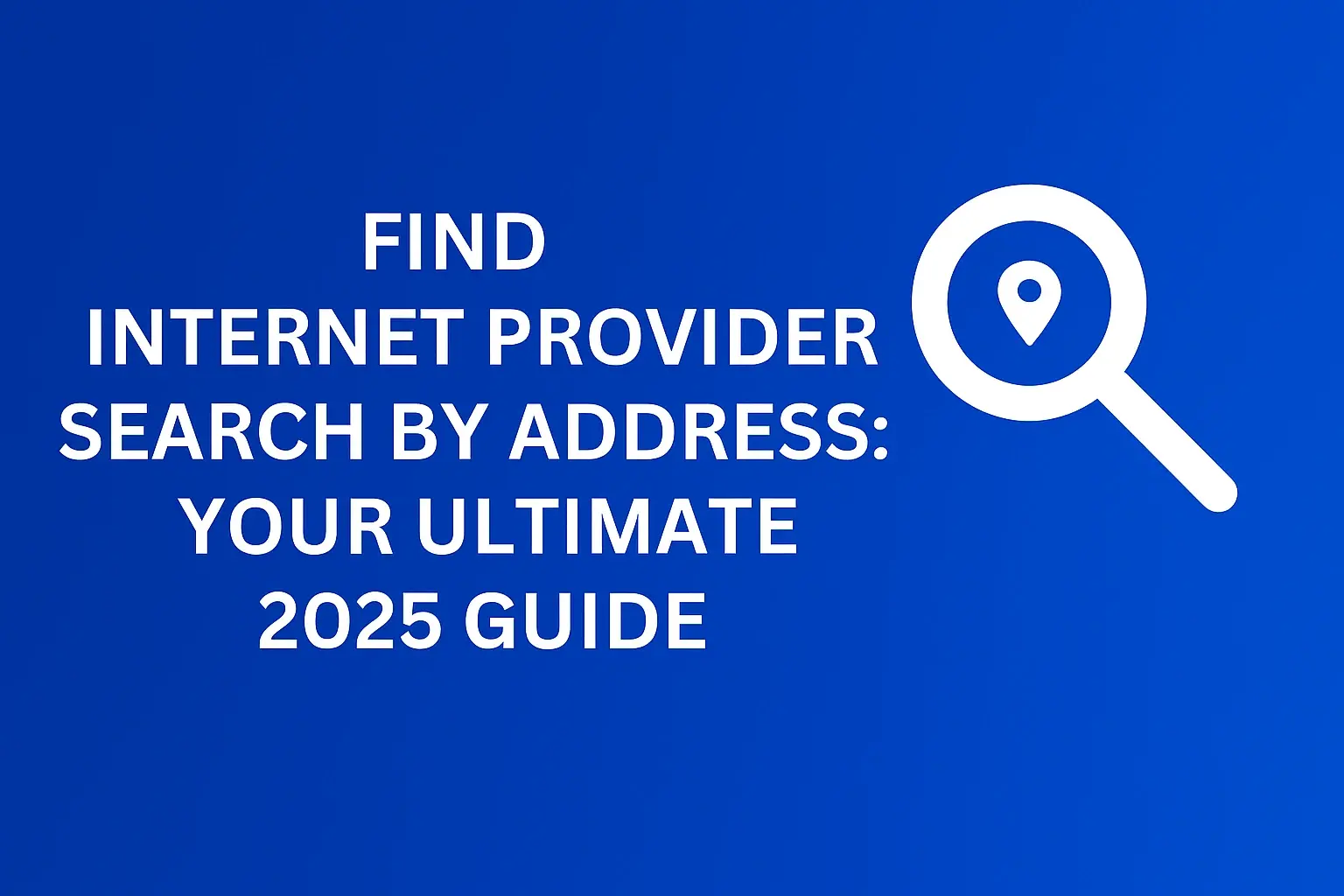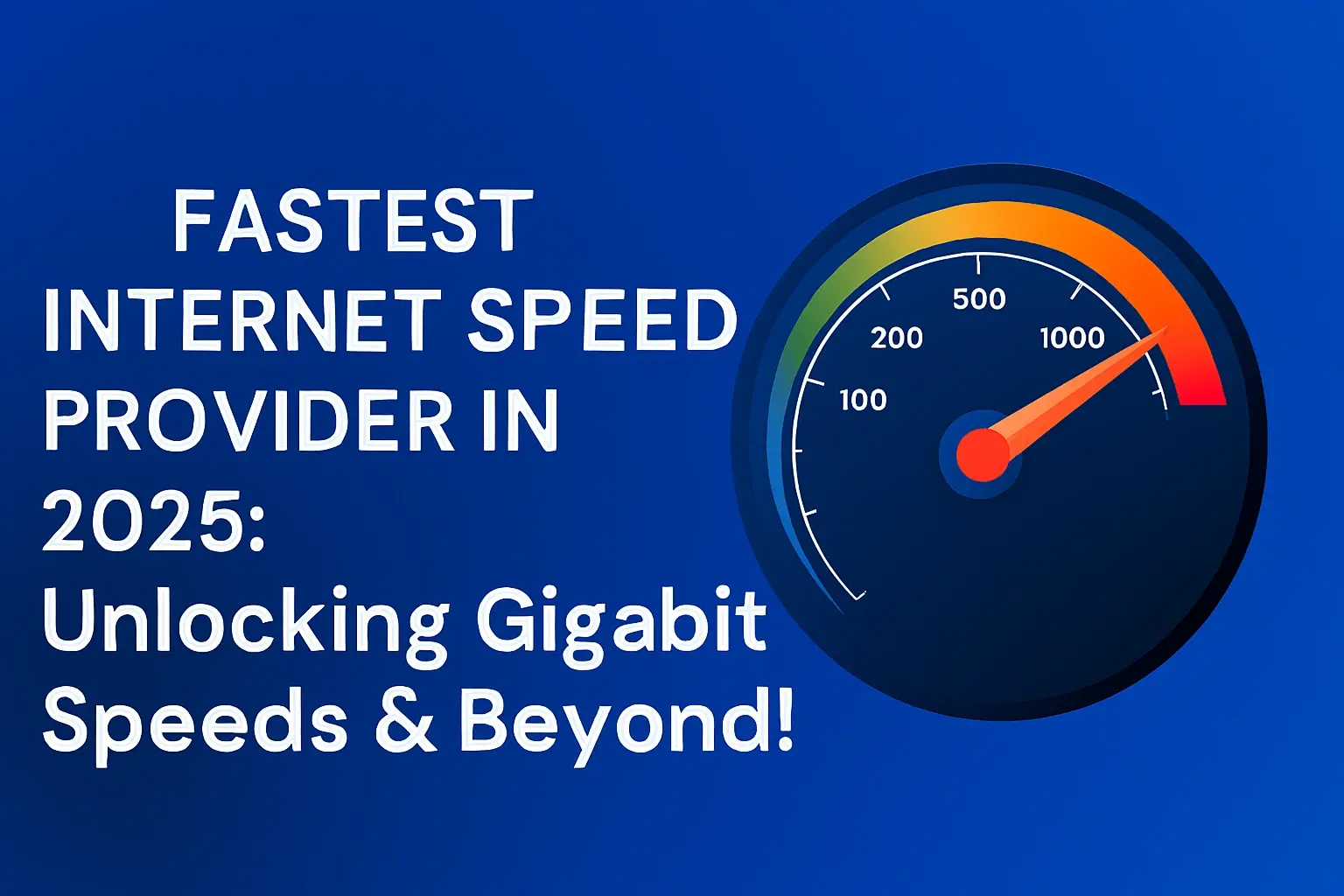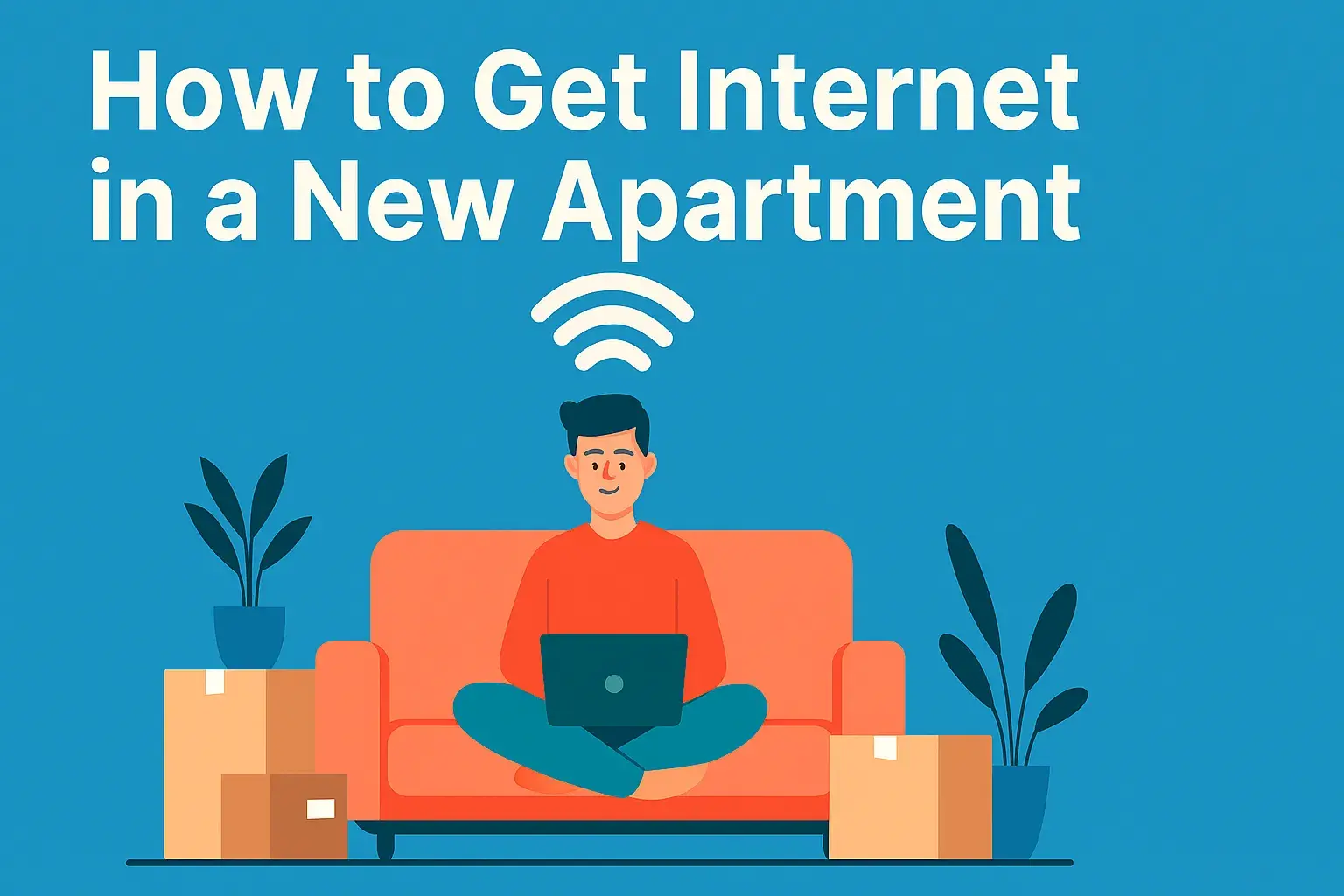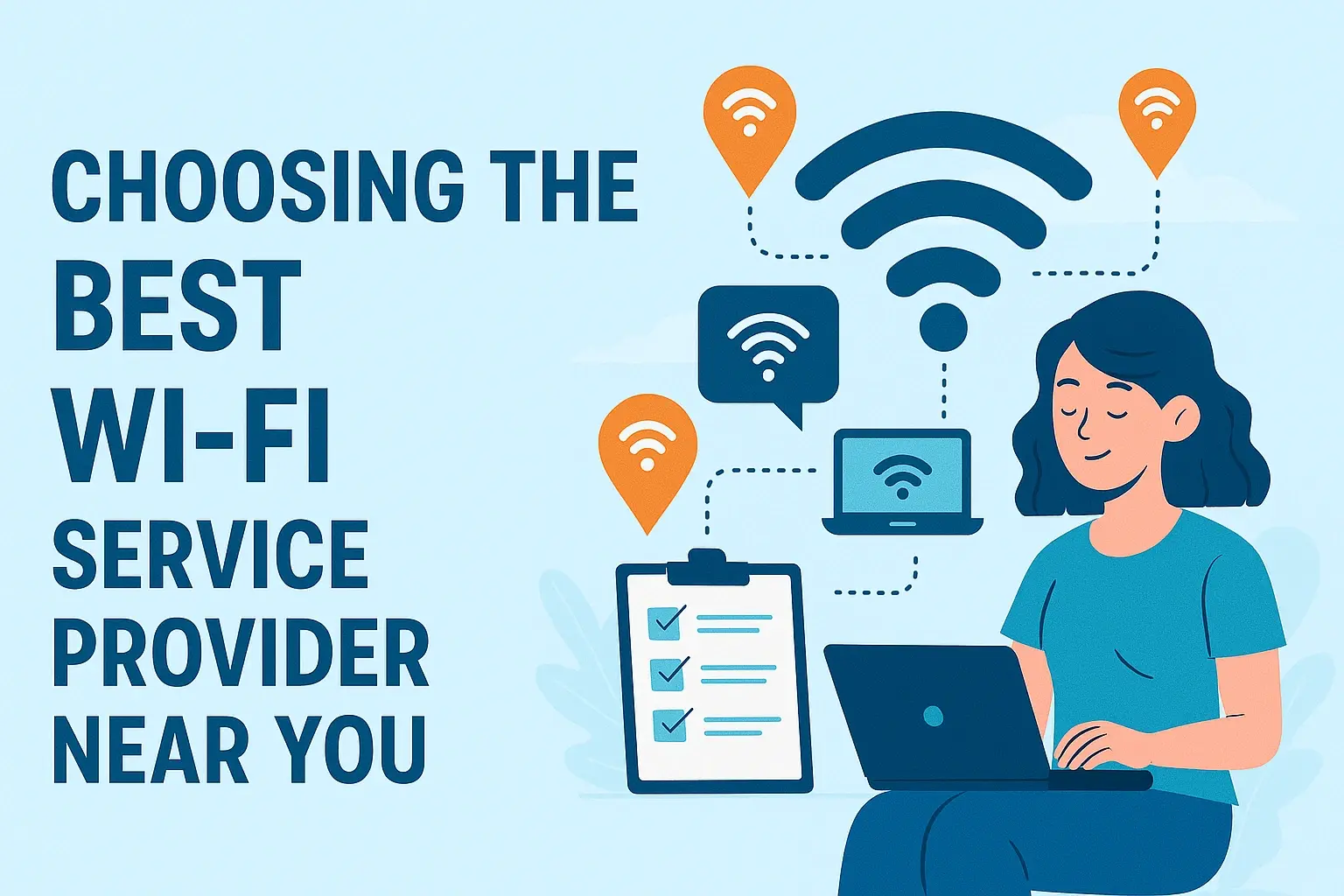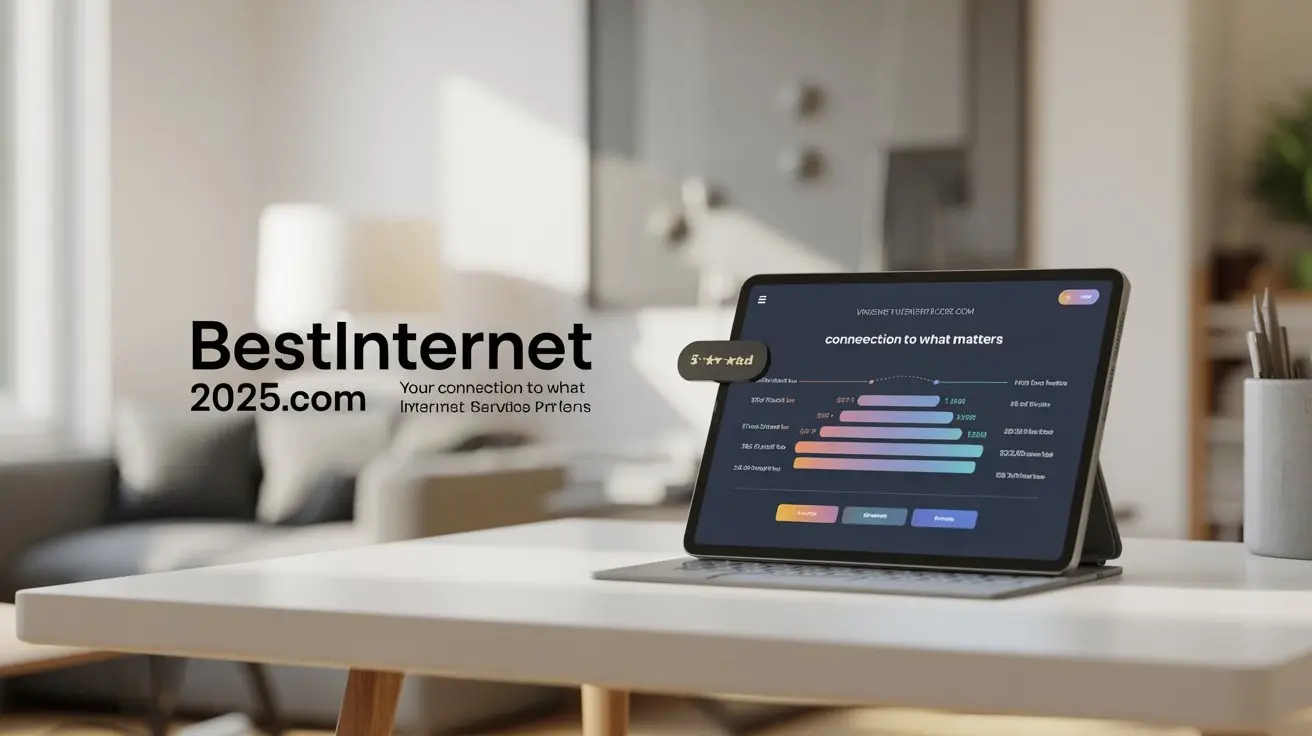Consumers Guide To Internet Speed

Navigating the world of internet speeds can be complex. This guide simplifies it, explaining what download and upload speeds mean, how to test them, and what you truly need for a seamless online experience in 2025.
Understanding Internet Speed: The Foundation
In today's digitally driven world, a fast and reliable internet connection is no longer a luxury but a necessity. Whether you're streaming your favorite shows, working from home, gaming online, or simply browsing the web, your internet speed plays a crucial role in your overall online experience. But what exactly does "internet speed" mean, and how can you ensure you're getting the best possible performance for your needs? This comprehensive consumer's guide to internet speed will demystify the technical jargon and provide you with the knowledge to make informed decisions about your home or business internet connection. We'll cover everything from the fundamental concepts of download and upload speeds to the various factors that influence performance and how to choose the right plan.
Download Speed vs. Upload Speed: The Core Concepts
When we talk about internet speed, we're primarily referring to two key metrics: download speed and upload speed. Understanding the difference between these is fundamental to grasping how your internet connection works and what kind of performance you can expect.
Download Speed
Download speed, measured in megabits per second (Mbps), dictates how quickly data can be transferred from the internet to your device. This is the speed that matters most for activities like streaming videos, downloading files, browsing websites, and playing online games. The higher your download speed, the faster these actions will occur. For instance, if you're watching a high-definition movie on a streaming service, a higher download speed ensures that the video buffers quickly and plays smoothly without interruption. Similarly, downloading a large software update or a new game will take significantly less time with a faster download speed.
Upload Speed
Upload speed, also measured in Mbps, refers to how quickly data can be transferred from your device to the internet. While often lower than download speeds, upload speed is critical for activities such as sending emails with large attachments, uploading photos and videos to social media or cloud storage, participating in video conferences, and live-streaming. If you frequently work from home and rely on video calls, a decent upload speed is essential for clear communication. Gamers also benefit from good upload speeds, as it helps in sending game data to the server quickly, reducing lag and improving responsiveness.
Bandwidth: The Highway for Your Data
Another important concept related to internet speed is bandwidth. Often used interchangeably with speed, bandwidth is more accurately described as the capacity of your internet connection. Think of it as the width of a highway. A wider highway (higher bandwidth) can accommodate more cars (data) traveling at the same time. While speed refers to how fast a single car can travel, bandwidth determines how many cars can travel simultaneously. A connection with high bandwidth can handle multiple devices and activities concurrently without significant slowdowns. For example, if multiple people in your household are streaming videos, browsing the web, and gaming, a higher bandwidth connection will ensure that everyone has a good experience.
In 2025, with the proliferation of smart home devices, high-resolution streaming, and increasingly data-intensive applications, adequate bandwidth is becoming as crucial as raw speed. Many internet plans offer different tiers of both speed and bandwidth, and it's important to consider how many devices and users will be sharing your connection when choosing a plan.
How to Measure Your Internet Speed
Understanding your current internet speed is the first step to identifying potential issues or determining if an upgrade is necessary. Fortunately, measuring your internet speed is a straightforward process thanks to numerous online tools.
Using Online Speed Test Tools
Several reputable websites offer free internet speed tests. These tools work by sending a small amount of data from a server to your device and measuring how long it takes to download and upload. They then present the results in Mbps for both download and upload speeds, as well as ping (latency).
- Popular Speed Test Websites:
- Speedtest.net (Ookla): One of the most widely used and reliable speed test platforms.
- Fast.com (Netflix): Optimized for testing streaming performance.
- Google Fiber Speed Test: Another simple and effective option.
- Microsoft Speed Test: Integrated into Windows devices.
Tips for Accurate Speed Tests
To ensure the most accurate results, follow these best practices when conducting a speed test:
- Connect via Ethernet: Whenever possible, connect your computer directly to your router using an Ethernet cable. Wi-Fi signals can be subject to interference and may not reflect the true speed provided by your ISP.
- Close Unnecessary Applications: Shut down any applications or browser tabs that might be consuming bandwidth, such as streaming services, large downloads, or cloud syncing tools.
- Test at Different Times: Internet speeds can fluctuate throughout the day due to network congestion. Running tests during peak hours (evenings) and off-peak hours can give you a more complete picture.
- Test Multiple Times: Perform the test several times to get an average reading and identify any significant variations.
- Use a Wired Device: If you can't use Ethernet, ensure the device you're testing on is close to the router and has a strong Wi-Fi signal.
- Restart Your Modem and Router: Before testing, it's a good practice to power cycle your modem and router. Unplug them, wait 30 seconds, and plug them back in.
Understanding Ping and Latency
Beyond download and upload speeds, speed tests also measure ping, often referred to as latency. Ping is the time it takes for a small packet of data to travel from your device to a server and back. It's measured in milliseconds (ms).
- Low Ping (e.g., < 50 ms): Ideal for real-time applications like online gaming, video conferencing, and VoIP calls. It means minimal delay between your action and the server's response.
- Moderate Ping (e.g., 50-100 ms): Generally acceptable for most internet activities, including streaming and general browsing.
- High Ping (e.g., > 100 ms): Can lead to noticeable lag in online games, choppy video calls, and a generally sluggish web experience.
While high download and upload speeds are important, low latency is critical for interactive online experiences.
Types of Internet Connections and Their Speeds
The type of internet connection you have significantly influences the speeds you can achieve. Different technologies offer varying levels of performance, reliability, and availability. As of 2025, several primary types of internet connections are prevalent, each with its own set of characteristics.
DSL (Digital Subscriber Line)
DSL internet uses existing telephone lines to transmit data. It's one of the older forms of broadband internet and is generally more widely available than newer technologies, especially in rural areas.
- Speeds: Typically ranges from 5 Mbps to 100 Mbps for downloads, with upload speeds being considerably lower (often 1 Mbps to 10 Mbps).
- Pros: Widely available, often more affordable than other options.
- Cons: Speeds degrade with distance from the telephone company's central office; susceptible to interference; generally slower than other broadband options.
Cable Internet
Cable internet uses the same coaxial cables that deliver cable television. It's a popular choice for many households due to its relatively high speeds and widespread availability in urban and suburban areas.
- Speeds: Download speeds can range from 50 Mbps to over 1 Gbps (1000 Mbps). Upload speeds are typically lower, often ranging from 5 Mbps to 50 Mbps.
- Pros: High download speeds, widely available, competitive pricing.
- Cons: Speeds can be affected by neighborhood congestion as bandwidth is shared among users; upload speeds are often significantly lower than download speeds.
Fiber Optic Internet (FTTH - Fiber to the Home)
Fiber optic internet is the current gold standard for speed and reliability. It uses thin strands of glass to transmit data as light signals, allowing for incredibly fast and consistent speeds.
- Speeds: Download and upload speeds can both reach 1 Gbps, 2 Gbps, or even higher (e.g., 10 Gbps).
- Pros: The fastest and most reliable internet technology available; symmetrical upload and download speeds; less susceptible to interference and distance degradation.
- Cons: Availability is still limited, primarily in major metropolitan areas and newer developments; can be more expensive than cable or DSL.
In 2025, fiber optic networks are expanding rapidly, making it an increasingly viable option for more consumers. If available in your area, it's often the best choice for demanding internet users.
Fixed Wireless Internet
Fixed wireless uses radio waves to connect to a base station, often mounted on a tower. It's a good alternative in areas where wired connections are not feasible.
- Speeds: Varies widely, but can range from 25 Mbps to 100 Mbps or more for downloads, with upload speeds typically lower.
- Pros: Can be deployed in rural or hard-to-reach areas; can be faster than satellite.
- Cons: Susceptible to weather conditions and line-of-sight obstructions; speeds can be inconsistent.
Satellite Internet
Satellite internet beams data from a satellite dish on your property to a satellite in orbit and then to a ground station. It's often the only option for very remote locations.
- Speeds: Historically slow, but newer satellite services are improving. Download speeds can range from 25 Mbps to 100 Mbps, but often with high latency. Upload speeds are typically very low (e.g., 2-5 Mbps).
- Pros: Available virtually anywhere with a clear view of the sky.
- Cons: High latency (ping) due to the distance data travels; susceptible to weather interference; data caps are common; can be expensive.
Newer satellite constellations, like SpaceX's Starlink, are significantly improving speeds and reducing latency, making satellite a more competitive option for some users in underserved areas.
5G Home Internet
Leveraging the latest cellular technology, 5G home internet offers a wireless alternative to traditional wired broadband. It uses 5G cellular networks to deliver internet to a home gateway device.
- Speeds: Varies greatly depending on signal strength and network congestion, but can range from 50 Mbps to over 1 Gbps in ideal conditions.
- Pros: Potentially very fast speeds, easy setup, no installation appointments needed, often competitive pricing.
- Cons: Availability is still expanding, performance can be inconsistent due to signal strength and network load, may have data caps or throttling.
As of 2025, 5G home internet is rapidly becoming a viable competitor to cable and even fiber in many areas, offering a compelling blend of speed and convenience.
Determining Your Ideal Internet Speed in 2025
The question of "how much internet speed do I need?" is highly personal and depends on your household's specific usage habits. What's sufficient for a single user might be inadequate for a family of four. In 2025, with increasingly data-rich online experiences, the recommended speeds have generally increased.
Understanding Your Usage Profile
The first step is to honestly assess how you and your household use the internet. Consider the following:
- Number of Users: How many people will be using the internet simultaneously?
- Number of Devices: How many devices (smartphones, tablets, laptops, smart TVs, gaming consoles, smart home devices) will be connected?
- Primary Activities: What are the main things you do online? (e.g., web browsing, email, streaming video, online gaming, video conferencing, downloading large files).
- Video Quality: Do you primarily watch standard definition (SD), high definition (HD), or 4K/8K ultra-high definition (UHD) content?
- Work/School Needs: Do you work from home or have children attending online classes? This often requires more robust upload speeds for video calls and file sharing.
Recommended Speeds by Activity (2025 Estimates)
Here's a general guideline for recommended speeds based on common internet activities. These are minimum recommendations for a smooth experience; higher is always better, especially for multiple users and devices.
Basic Usage (Web Browsing, Email, Social Media)
- Download Speed: 10-25 Mbps
- Upload Speed: 1-3 Mbps
- Notes: Suitable for single users or households with minimal internet needs.
Standard Streaming & General Use (HD Streaming, Light Gaming, Video Calls)
- Download Speed: 25-50 Mbps
- Upload Speed: 3-10 Mbps
- Notes: Good for households with 1-2 users and a few devices. Handles HD streaming well.
Heavy Streaming & Moderate Gaming (Multiple HD Streams, 4K Streaming, Regular Online Gaming)
- Download Speed: 50-100 Mbps
- Upload Speed: 10-20 Mbps
- Notes: Ideal for families with multiple users and devices, frequent streaming of HD and some 4K content, and casual online gaming.
Power User & Professional Use (Multiple 4K Streams, Heavy Online Gaming, Frequent Video Conferencing, Large File Uploads/Downloads)
- Download Speed: 100-300 Mbps
- Upload Speed: 20-50 Mbps
- Notes: Essential for households with many connected devices, heavy reliance on 4K streaming, serious online gamers, and remote workers who upload/download large files or participate in frequent high-quality video conferences.
Extreme Power User & Business (Gigabit Speeds, Multiple Simultaneous 4K/8K Streams, Professional Content Creation, Large-Scale Data Transfer)
- Download Speed: 300 Mbps - 1 Gbps+
- Upload Speed: 50 Mbps - 1 Gbps+
- Notes: For households with very high demands, professional content creators, or small businesses. Symmetrical speeds (download = upload) are highly beneficial here.
The Importance of Upload Speed in 2025
As remote work, video conferencing, and cloud-based collaboration become more ingrained in our daily lives, upload speed is gaining prominence. Many people focus solely on download speeds, overlooking the impact of insufficient upload speeds on activities like participating in clear video calls, uploading large project files, or live-streaming. For those who work from home or engage in content creation, prioritizing a plan with a strong upload component is crucial. Fiber optic connections and some newer 5G plans often offer symmetrical or near-symmetrical speeds, which are a significant advantage.
Consider this scenario: A family of four. Two adults work from home, requiring frequent high-quality video calls. Two teenagers are engaged in online gaming and streaming HD content. In this case, a plan with at least 100 Mbps download and 20-30 Mbps upload would be a reasonable starting point. If they also frequently upload large video projects or stream 4K content simultaneously, they might need to consider plans offering 300 Mbps or more download and 50 Mbps+ upload.
Factors That Can Affect Your Internet Speed
Even if you subscribe to a high-speed internet plan, several factors can prevent you from achieving the advertised speeds. Understanding these can help you troubleshoot and optimize your connection.
Your Router and Modem
The hardware you use to connect to the internet is a critical bottleneck.
- Outdated Router: Older routers may not support the latest Wi-Fi standards (e.g., Wi-Fi 6/6E/7) or the speeds offered by your ISP. If your router is several years old, it might be time for an upgrade.
- Router Placement: The physical location of your router significantly impacts Wi-Fi signal strength. Walls, furniture, and other electronic devices can interfere with the signal. Placing the router in a central, open location, away from obstructions, is recommended.
- Modem Capabilities: Ensure your modem is capable of handling the speeds provided by your ISP. If you rent a modem from your ISP, confirm it's up-to-date. If you own one, check its specifications against your plan.
- Wi-Fi Interference: Other devices operating on similar frequencies (e.g., microwaves, cordless phones, Bluetooth devices, neighboring Wi-Fi networks) can cause interference and slow down your wireless connection.
Number of Connected Devices and Simultaneous Usage
As mentioned earlier, every device connected to your network consumes a portion of your available bandwidth. The more devices actively using the internet, the less speed is available for each individual device. This is particularly noticeable during peak usage times within a household.
Your Internet Service Provider (ISP)
Your ISP plays a direct role in the speeds you receive.
- Network Congestion: During peak hours (typically evenings), when many users in your neighborhood are online, the ISP's network can become congested, leading to slower speeds for everyone. This is more common with cable internet, where bandwidth is shared.
- Throttling: Some ISPs may intentionally slow down your connection if you exceed certain data usage limits or engage in specific activities (e.g., peer-to-peer file sharing).
- Plan Limitations: The speed tier you subscribe to directly limits the maximum speed you can achieve.
Distance from the ISP's Equipment
For DSL and some fixed wireless connections, the physical distance between your home and the ISP's central office or tower can significantly impact speeds. The farther away you are, the weaker the signal and the slower the connection tends to be. Fiber optic connections are largely immune to this issue.
Your Devices
The performance of the devices you use also matters.
- Device Age and Capability: Older computers or smartphones may not be capable of processing the fastest internet speeds, even if your connection is robust.
- Operating System and Software: Outdated operating systems or background processes can consume bandwidth or processing power, slowing down your perceived internet speed.
- Malware: Viruses or malware can run in the background, consuming bandwidth and slowing down your connection.
Website or Server Limitations
Sometimes, the bottleneck isn't your internet connection but the server you're trying to access. If a website's server is overloaded or has slow upload speeds, it will affect how quickly you can download content from it, regardless of your own internet speed.
Choosing the Right Internet Plan for Your Needs
Selecting an internet plan can feel overwhelming with the variety of options available. A strategic approach will ensure you get the best value and performance for your specific requirements.
Compare Different Providers and Technologies
Start by identifying which internet technologies (cable, fiber, DSL, 5G home) are available at your address. Use online tools or contact local providers to check availability. Once you know your options, compare:
- Speeds (Download and Upload): Match these to your estimated needs as outlined previously.
- Pricing: Look beyond introductory offers. Understand the regular monthly cost after promotional periods expire.
- Data Caps: Check if the plan has data limits. For heavy users, unlimited data is essential.
- Contract Length: Are you required to sign a long-term contract?
- Equipment Fees: Are there additional charges for modems or routers?
- Installation Fees: Some providers charge a one-time fee for installation.
- Customer Reviews: Research customer satisfaction and reliability ratings for providers in your area.
Understanding Contracts and Fees
Many internet plans come with contracts, often for 12 or 24 months. While these can sometimes offer lower introductory pricing, be aware of early termination fees if you need to break the contract. Also, scrutinize your bill for hidden fees, such as modem rental fees, activation fees, or equipment surcharges. Owning your own compatible modem and router can sometimes save money in the long run.
Unlimited Data vs. Data Caps
Data caps are limits on the amount of data you can download and upload per month. Exceeding these caps can result in extra charges or a significant slowdown in your internet speed.
- For light users: A plan with a moderate data cap (e.g., 100-250 GB) might suffice.
- For moderate to heavy users: Plans with higher data caps (e.g., 1 TB) or, ideally, unlimited data are recommended. This includes households that stream a lot of video, play online games, or frequently download/upload large files.
In 2025, many providers are moving towards unlimited data plans, especially for higher-speed tiers, but it's crucial to verify this.
Bundling Services
Some providers offer bundles that combine internet, TV, and phone services. While these can sometimes offer savings, carefully compare the bundled price against the cost of individual services from different providers to ensure you're getting the best deal.
Negotiating Your Internet Bill
Don't be afraid to negotiate with your ISP, especially when your contract is nearing its end or if you're considering switching providers. Many customer service representatives have the authority to offer discounts or better plans to retain customers. Research competitor pricing before you call.
Troubleshooting Common Slow Internet Issues
Experiencing slow internet can be frustrating. Before calling your ISP, try these common troubleshooting steps to identify and resolve the problem.
1. Restart Your Modem and Router
This is the simplest and often most effective solution. Power cycling your equipment can clear temporary glitches and re-establish a stable connection.
- Unplug the power cords from both your modem and router.
- Wait for at least 30 seconds.
- Plug the modem back in first and wait for its lights to stabilize (usually 1-2 minutes).
- Plug the router back in and wait for its lights to stabilize.
- Test your internet speed again.
2. Check Your Internet Speed
As detailed earlier, use reliable speed test websites (e.g., Speedtest.net) to measure your current download and upload speeds. Compare these results to the speeds advertised in your internet plan. If the speeds are consistently much lower than what you're paying for, it's time to investigate further.
3. Test Your Connection Directly
If you're experiencing slow Wi-Fi, connect a computer directly to your router using an Ethernet cable. Run a speed test.
- If the speed is significantly faster via Ethernet, the problem likely lies with your Wi-Fi signal or router settings.
- If the speed is still slow via Ethernet, the issue might be with your modem, your ISP's service, or congestion on their network.
4. Inspect Your Router and Wi-Fi Signal
- Router Placement: Ensure your router is in a central, open location, away from obstructions like thick walls, metal objects, or other electronics.
- Wi-Fi Channel: Routers broadcast on specific channels. If your channel is crowded by neighboring networks, it can cause interference. Many routers have an "auto" setting for channel selection, or you can manually select a less congested channel using a Wi-Fi analyzer app.
- Wi-Fi Band: Most modern routers offer both 2.4 GHz and 5 GHz bands. The 2.4 GHz band has a longer range but is more prone to interference and slower speeds. The 5 GHz band offers faster speeds and less interference but has a shorter range. Try connecting to the 5 GHz band if you're close to the router.
- Firmware Update: Ensure your router's firmware is up-to-date. Manufacturers release updates to improve performance and security.
5. Reduce Network Congestion
- Limit Simultaneous Devices: Temporarily disconnect devices that are not actively in use, especially those performing bandwidth-intensive tasks like streaming or downloading.
- Check for Bandwidth Hogs: Identify any devices or applications that might be consuming excessive bandwidth. Some routers allow you to monitor network activity.
6. Scan for Malware
Malware can run in the background and consume your internet bandwidth. Run a full scan with reputable antivirus and anti-malware software on all your devices.
7. Check Your ISP's Status
Visit your ISP's website or social media pages, or use outage tracking websites like Downdetector, to see if there are any reported outages or maintenance in your area.
8. Contact Your ISP
If you've tried the steps above and your internet speed is still significantly slower than expected, it's time to contact your Internet Service Provider. Be prepared to provide them with the results of your speed tests, the troubleshooting steps you've already taken, and details about your equipment. They can check for issues on their end, test your line, and potentially schedule a technician visit.
The Future of Internet Speed: What to Expect
The evolution of internet technology is relentless, promising even faster and more reliable connections in the coming years. As we look beyond 2025, several key trends are shaping the future of internet speed.
The Dominance of Fiber Optics
Fiber optic technology is already the fastest available, and its deployment is expected to accelerate. Governments and private companies are investing heavily in expanding fiber networks to more homes and businesses. This will lead to greater availability of gigabit and multi-gigabit speeds, making current speeds seem slow by comparison.
Advancements in 5G and Beyond (6G)
5G home internet is rapidly maturing and will continue to offer a competitive wireless broadband solution. Beyond 5G, the development of 6G technology is already underway, promising speeds that could be orders of magnitude faster than 5G, with even lower latency. While 6G is still years away from widespread consumer adoption, its potential is immense, enabling truly immersive experiences like holographic communication and advanced augmented reality.
Increased Speeds for Satellite Internet
New satellite constellations are revolutionizing internet access for remote and underserved areas. Technologies like Starlink are significantly reducing latency and increasing speeds, making satellite a more viable option for a broader range of users. Continued innovation in this sector will further bridge the digital divide.
The Role of AI and Network Optimization
Artificial intelligence (AI) will play an increasingly important role in managing and optimizing internet networks. AI algorithms can predict traffic patterns, dynamically allocate bandwidth, and proactively identify and resolve issues, leading to more stable and efficient connections.
Higher Demand for Bandwidth
As technologies like virtual reality (VR), augmented reality (AR), the metaverse, and higher-resolution streaming (8K and beyond) become more mainstream, the demand for both speed and bandwidth will continue to soar. Future internet infrastructure will need to accommodate these data-intensive applications.
The trajectory of internet speed is clear: faster, more reliable, and more accessible connections are on the horizon. Staying informed about these advancements will help consumers make informed decisions about their current and future internet needs.
In conclusion, understanding internet speed is paramount in today's connected world. By grasping the fundamentals of download and upload speeds, knowing how to accurately measure your connection, and being aware of the different technologies and factors that influence performance, you can make informed choices. As we've explored, determining your ideal speed in 2025 involves assessing your household's unique usage patterns, from streaming habits to remote work requirements. Don't underestimate the impact of your router, network congestion, or even your ISP's infrastructure on your daily experience. This consumer's guide to internet speed has equipped you with the knowledge to navigate these complexities, troubleshoot common issues, and select the plan that best suits your needs and budget. Prioritize your online experience by choosing a speed that empowers your digital life.
